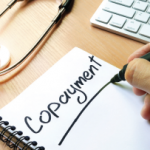Staff also review the calendar daily to see if any patients scheduled for a visit that day owe anything, so they can charge a balance and give the patient the receipt when they are there.
After a credit card is charged, patients are mailed a receipt. “It was important early on to have that communication link with patients so they became comfortable with the program,” Ms. Rogers says. “But our goal is to stop doing this for balances under $100 after a year so we don’t have that as an expense.”
Some patients also expressed concern about the system’s security. “We explained that we don’t keep their card’s information in our system; it’s only retained in the merchant’s system,” Ms. Rogers says. “We can only view their card’s last four digits and expiration date.”
The staff also tell patients that EasyPay is a secure and government-compliant database and that the practice underwent an approval process to employ the system. EasyPay provided the practice with a security handout that staff can give to patients to help ease any concerns.
‘In order for a change to be successful, you must ensure that all staff are on the same page.’ —Dr. Arnold
All fees related to an office visit are billed using the EasyPay system, including such services as infusion, physical therapy, X-rays and ultrasound.
As an alternative to having a card on file, Medicare patients can keep a $250 retainer, and commercial patients are required to have a $500 retainer. “We will only swipe up to $500 at one time,” Ms. Rogers says. “But if someone is leaving the practice, then we bill for the entire balance.”
Success Abounds
Dr. Arnold is pleased to report that 75% of the time there are no patient balances, which shows the program’s success. What’s more, the practice no longer has to pay an outside billing company or an agency to perform collections. “There is nothing more aggravating than sending multiple bills to a patient,” Dr. Arnold says. “EasyPay has allowed us to eliminate most of that cost—which ate away at our profit margin.”
Ms. Rogers says the program has been even more successful than she expected. “Initially I was nervous about how patients would react, but having the physicians’ support was key,” she says. “The Medicare patients love it because they no longer receive a bill to pay. Our patient accounts receivable has decreased by 25%.”
Just ‘Do It’
Most consumers are accustomed to paying for gas or groceries when they obtain those products. “But for some reason in our culture, they don’t have that same mindset when leaving a physician’s office,” Dr. Arnold says, “perhaps it’s because they already pay a monthly insurance premium.” It could also be because, a while back, physicians’ offices would allow patients to pay off a bill over many months. When 30–40% of patients have a deductible that’s $3,500 or higher, though, offices don’t have the means to carry those high balances. “We believe the healthcare community has to create the expectation of payment at time of service; we cannot afford to fund it any longer,” says Ms. Rogers.


